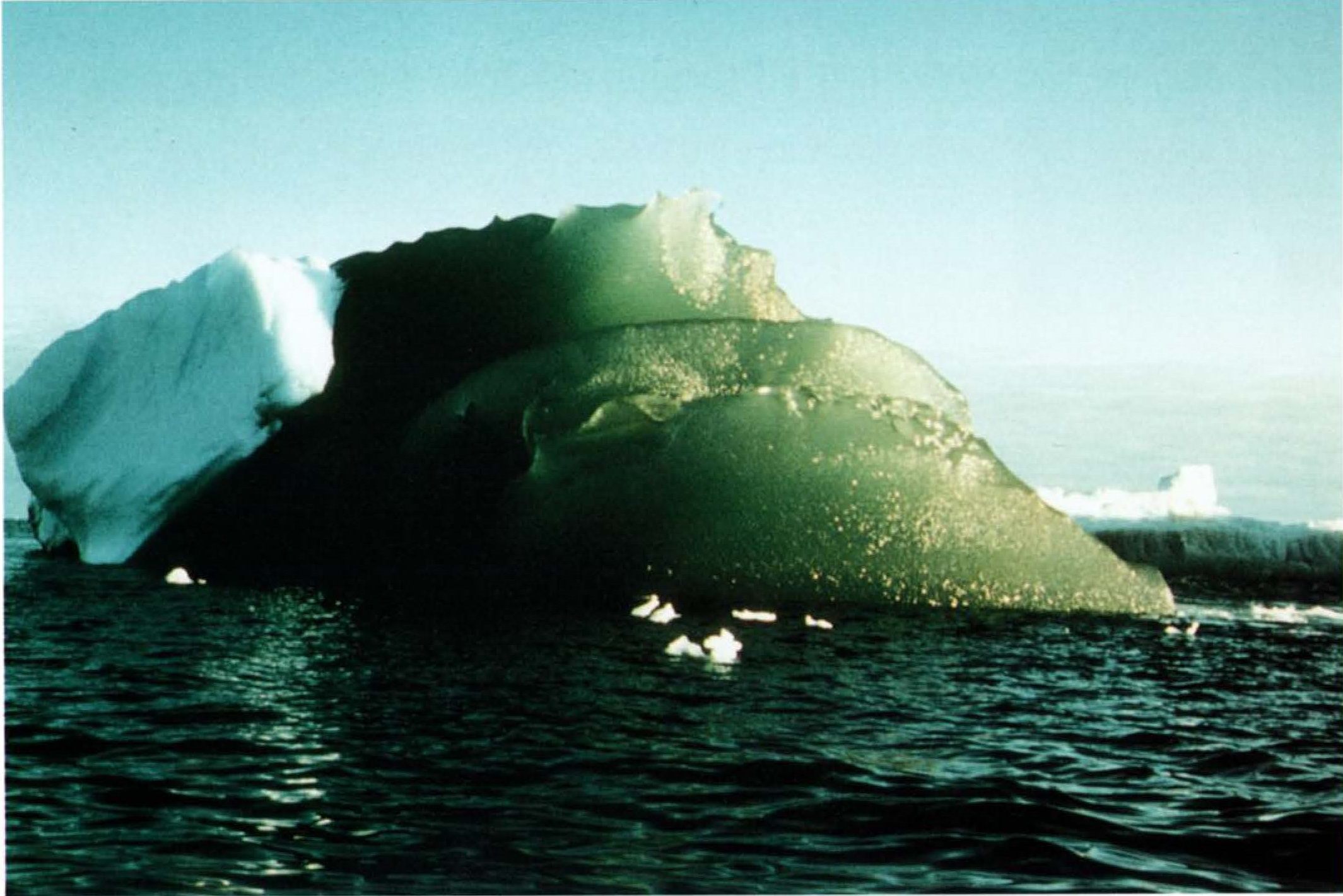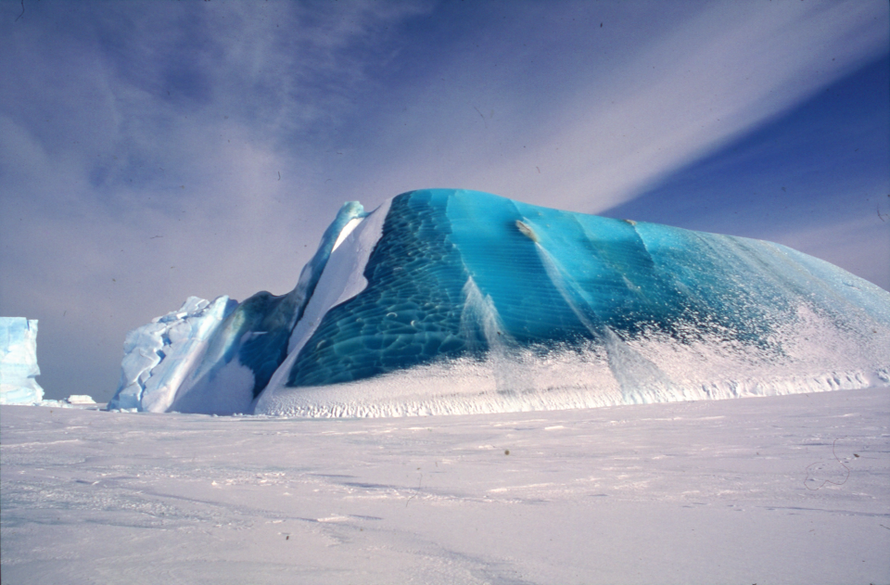Icebergs Can Be Surprisingly Colorful
Scientists have a new theory about why they sometimes look like frosty green gemstones.

Picture an iceberg, and you’ll probably envision something white as snow rising up out of a blue sea. But icebergs—and their diminutive counterparts, adorably known as bergy bits and growlers—can be all sorts of shades, from frosty blue to striped to a beguiling green.
Researchers and mariners have observed emerald icebergs for years—a chunk of ice “mast-high” and “green as emerald” even figures in Samuel Taylor Coleridge’s 1834 poem, “The Rime of the Ancient Mariner.” But they haven’t pinned down exactly why these icebergs look the way they do. In a new paper in the American Geophysical Union journal JGR Oceans, researchers led by Stephen Warren, a glaciologist and emeritus professor at the University of Washington, offer a new theory about exactly how these floating behemoths get their greenish hues.
It all has to do with what icebergs are made out of. Icebergs calve off glaciers or ice shelves, mainly around Antarctica and Greenland. Since they begin their lives as snowfall that accumulates over time, icebergs contain air pockets, in the form of bubbles that scatter light. With some exceptions and occasional stripes, glacier ice tends to look bluish white.

When icebergs are out in the ocean, though, their composition changes as seawater—and the minerals and organic bits inside it—freezes to the base. This is known as “marine ice,” and it’s sometimes exposed if an iceberg topples over. This newly formed stuff is often stunning—sometimes appearing marbled, shot through with glassy striations of blue or green.
Warren has been noodling over green icebergs since he spotted one on a trip to Mawson research station near Antarctica’s Amery Ice Shelf back in the 1980s. His first hunch was that the green was a product of dissolved carbon, from decaying plants or marine animals—but samples didn’t bear that out. Another idea started to take shape after researchers from the University of Tasmania published a paper, in 2016, reporting that they had found a high concentration of iron in a core sample marine ice from the Amery Ice Shelf. That got Warren thinking. “When I read their paper, it dawned on me that that could be the explanation for the green color of the icebergs,” he says.
When glaciers scrape across land, they produce what’s known as glacier flour—a product of bedrock being ground down by the moving mass. As glaciers retreat, this geologic debris is usually flushed out into water, in particles sometimes too small to be visible to the naked eye. But on land, soil and rocks contain iron oxides that often have ruddy hues, like reds, yellows, and browns—and since the Tasmanian team found that the marine ice contained 500 times more iron than the glacier ice, Warren wondered whether the ochre-y sediment was responsible for icebergs taking on a green appearance. Ice absorbs red light, while iron oxides absorb blue light. The hypothesis is that, when iron oxides appear in marine ice, “it will shift the color over to green,” Warren says.
He doesn’t know for sure. He’s hoping to secure funding so that he, along with Tasmanian collaborators, can return to the area around the Amery Ice Shelf and study the icebergs themselves. If he gets the chance, Warren plans to examine “blue, blueish green, green, and yellowish green” ‘bergs, measure the spectrum of reflected light at each, and take fresh samples. For now, the green icebergs remain a bit of a beautiful mystery.











Follow us on Twitter to get the latest on the world's hidden wonders.
Like us on Facebook to get the latest on the world's hidden wonders.
Follow us on Twitter Like us on Facebook